| TOXIC CAUSES OF PARKINSON'S DISEASE | ||
PARAQUAT Paraquat is a quaternary ammonium herbicide. Other members of this class include diquat, cyperquat, diethamquat, difenzoquat and morfamquat. Pesticides are known to be associated with an increased rate of Parkinson's Disease. Paraquat structurally resembles MPTP and its metabolite MPP+. MPTP and MPP+ are neurotoxic chemicals, that induce Parkinson's Disease in exposed humans. Paraquat might therefore might, as do MPTP and MPP+ inhibit tyrosine hydroxylation, which is essential for the formation of dopamine. Paraquat is a quaternary ammonium herbicide. Other members of this class include diquat, cyperquat, diethamquat, difenzoquat and morfamquat. Pesticides are known to be associated with an increased rate of Parkinson's Disease. Paraquat structurally resembles MPTP and its metabolite MPP+. MPTP and MPP+ are neurotoxic chemicals, that induce Parkinson's Disease in exposed humans. Paraquat might therefore might, as do MPTP and MPP+ inhibit tyrosine hydroxylation, which is essential for the formation of dopamine.ROTENONE Rotenone is an insecticide that has the potential to cause Parkinson's disease. Insecticides are also known to affect well water. Rotenone is commonly used in powdered form to treat parasitic mites on chickens and other fowl, and 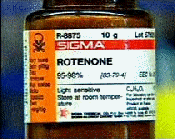 so can be found in poultry. Rotenone is produced by extraction from the roots, seeds, and leaves of certain tropical legumes. Rotenone inhibits tyrosine hydroxylation, which is essential for the formation of dopamine. So rotenone could cause Parkinson's disease by lowering dopamine levels. When given intravenously to mice, rotenone has been demonstrated to cause a model of Parkinson's disease. Rotenone toxicity is also caused by complex I inhibition, depletion of cellular and oxidative damage. These processes cause loss of midbrain dopaminergic neurons, leading to depletion of dopamine in the brain. so can be found in poultry. Rotenone is produced by extraction from the roots, seeds, and leaves of certain tropical legumes. Rotenone inhibits tyrosine hydroxylation, which is essential for the formation of dopamine. So rotenone could cause Parkinson's disease by lowering dopamine levels. When given intravenously to mice, rotenone has been demonstrated to cause a model of Parkinson's disease. Rotenone toxicity is also caused by complex I inhibition, depletion of cellular and oxidative damage. These processes cause loss of midbrain dopaminergic neurons, leading to depletion of dopamine in the brain.MANEB Maneb is a fungicide that contains manganese. The major active element of Maneb is manganese ethylene-bis-dithiocarbamate. Pesticides are known to be associated with an increased rate of Parkinson's  disease, so there is a disease, so there is a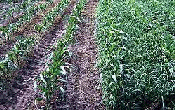 greatly increased likelihood of developing toxic symptoms by people involved in horticulture and agriculture. As Maneb contains manganese it is possible that it causes Parkinson's Disease symptoms via the same means as manganese, which is by inhibiting tyrosine hydroxylation, which is essential for the formation of dopamine. The effects of Maneb are potentiated when there is simultaneous exposure to the pesticide Paraquat. greatly increased likelihood of developing toxic symptoms by people involved in horticulture and agriculture. As Maneb contains manganese it is possible that it causes Parkinson's Disease symptoms via the same means as manganese, which is by inhibiting tyrosine hydroxylation, which is essential for the formation of dopamine. The effects of Maneb are potentiated when there is simultaneous exposure to the pesticide Paraquat.MANGANESE Manganese can cause manganism, an irreversible neurological disorder similar to Parkinson's disease. Occupational exposures occur mainly in welding, mining as miners are surrounded by manganese dust and airborne manganese  particles, alloy production, processing, ferro-manganese operations especially in which manganese ore or manganese compounds are turned into steel, and work with agrochemicals. The towns and communities surrounding the areas of manganese heavy industry could also become affected by toxic exposure to manganese. It is also hypothesized that long-term exposure to the naturally-occurring manganese in shower water also puts people at risk. Manganese inhibits tyrosine hydroxylation, which is essential for the formation of dopamine. So manganese may cause Parkinson's disease by lowering dopamine levels. particles, alloy production, processing, ferro-manganese operations especially in which manganese ore or manganese compounds are turned into steel, and work with agrochemicals. The towns and communities surrounding the areas of manganese heavy industry could also become affected by toxic exposure to manganese. It is also hypothesized that long-term exposure to the naturally-occurring manganese in shower water also puts people at risk. Manganese inhibits tyrosine hydroxylation, which is essential for the formation of dopamine. So manganese may cause Parkinson's disease by lowering dopamine levels.MPTP MPTP (1-methyl 4-phenyl 1,2,3,6-tetrahydropyridine) is a chemical that may be produced accidentally during illicit manufacture of the recreational drug MPPP, which is a synthetic heroin substitute. The neurotoxicity of MPTP was  discovered in 1976 after a chemistry graduate student synthesized MPPP incorrectly and injected the result. It was contaminated with MPTP, and within three days he began exhibiting symptoms of acute Parkinson's disease. It was also developed but unused as a herbicide and was distributed on the streets as a synthetic opioid-like drug. MPTP inhibits tyrosine hydroxylation, which is essential for the formation of dopamine. So MPTP causes acute Parkinson's disease by lowering dopamine levels. discovered in 1976 after a chemistry graduate student synthesized MPPP incorrectly and injected the result. It was contaminated with MPTP, and within three days he began exhibiting symptoms of acute Parkinson's disease. It was also developed but unused as a herbicide and was distributed on the streets as a synthetic opioid-like drug. MPTP inhibits tyrosine hydroxylation, which is essential for the formation of dopamine. So MPTP causes acute Parkinson's disease by lowering dopamine levels.TOLUENE  Toluene is a solvent that has been shown to cause Parkinson's Disease, or that has been associated with people with Parkinson's disease. Toluene is used as an octane booster in fuel, as a solvent in paints, paint thinners, chemical reactions, rubber, printing, adhesives, lacquers, leather tanning, disinfectants, and to produce phenol and TNT (a component of explosives). It is also used as a raw material for toluene di-isocyanate, which is used in the manufacture of polyurethane foams. The precise means of toxicity of toluene is not known. Toluene is a solvent that has been shown to cause Parkinson's Disease, or that has been associated with people with Parkinson's disease. Toluene is used as an octane booster in fuel, as a solvent in paints, paint thinners, chemical reactions, rubber, printing, adhesives, lacquers, leather tanning, disinfectants, and to produce phenol and TNT (a component of explosives). It is also used as a raw material for toluene di-isocyanate, which is used in the manufacture of polyurethane foams. The precise means of toxicity of toluene is not known.N-HEXANE  N-hexane, a constituent of solvents has been shown to cause parkinsonism. Most of the n-hexane used in industry is mixed with similar chemicals called solvents. The major use for solvents containing n-hexane is to extract vegetable oils from crops such as soybeans. These solvents are also used as cleaning agents in the printing, textile, furniture, and shoe making industries, and also by chemists. Certain glues used in the roofing, and shoe and leather industries also contain n-hexane. Several consumer products contain n-hexane, such as gasoline, spot removers, quick-drying glues, and also rubber cement. The precise means of toxicity of n-hexane is still unknown. N-hexane, a constituent of solvents has been shown to cause parkinsonism. Most of the n-hexane used in industry is mixed with similar chemicals called solvents. The major use for solvents containing n-hexane is to extract vegetable oils from crops such as soybeans. These solvents are also used as cleaning agents in the printing, textile, furniture, and shoe making industries, and also by chemists. Certain glues used in the roofing, and shoe and leather industries also contain n-hexane. Several consumer products contain n-hexane, such as gasoline, spot removers, quick-drying glues, and also rubber cement. The precise means of toxicity of n-hexane is still unknown.CARBON DISULFIDE  Carbon disulfide, usually in solvents or pesticides, can cause Parkinson's disease that is associated with other neurological symptoms. The toxic effects can persist for years after exposure to the carbon disulfide has ceased. Potential sources include pesticides used as fumigants, disulfiram (a drug used in the treatment of chronic alcoholism), industrial solvents, solvents used in the production of viscose rayon and cellophane film. Means of toxicity is not established. However, carbon disulphide interferes with pyridoxal 5-phosphate. Pyridoxal 5-phosphate is essential for the formation of dopamine from L-dopa. So carbon disulphide may cause Parkinson's disease symptoms by reducing the formation of L-dopa. Carbon disulfide, usually in solvents or pesticides, can cause Parkinson's disease that is associated with other neurological symptoms. The toxic effects can persist for years after exposure to the carbon disulfide has ceased. Potential sources include pesticides used as fumigants, disulfiram (a drug used in the treatment of chronic alcoholism), industrial solvents, solvents used in the production of viscose rayon and cellophane film. Means of toxicity is not established. However, carbon disulphide interferes with pyridoxal 5-phosphate. Pyridoxal 5-phosphate is essential for the formation of dopamine from L-dopa. So carbon disulphide may cause Parkinson's disease symptoms by reducing the formation of L-dopa.CARBON MONOXIDE Carbon monoxide toxicity is frequent due to the formation of carbon monoxide by very common means such as gas cookers and exhaust fumes. However, it normally requires severe exposure (e.g. the person going into a coma as a  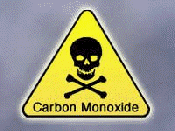 result of the carbon monoxide poisoning) before symptoms of Parkinson's disease develop. Carbon monoxide causes hemoglobin (which transports oxygen) to turn in to carboxyhemoglobin (which does not transport oxygen). Oxygen is required for the formation of L-dopa. So carbon monoxide may cause Parkinson's disease symptoms by interfering with the availability of oxygen to the brain. However, the precise means by which it can cause parkinsonism has still not been proven. result of the carbon monoxide poisoning) before symptoms of Parkinson's disease develop. Carbon monoxide causes hemoglobin (which transports oxygen) to turn in to carboxyhemoglobin (which does not transport oxygen). Oxygen is required for the formation of L-dopa. So carbon monoxide may cause Parkinson's disease symptoms by interfering with the availability of oxygen to the brain. However, the precise means by which it can cause parkinsonism has still not been proven.MERCURY Mercury toxicity is a known cause of symptoms that mimic Parkinson's disease, especially tremor. One of the chief targets of the toxin is the enzyme pyruvate dehydrogenase (PDH). The enzyme is irreversibly inhibited by several 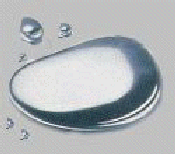 mercury compounds, the lipoic acid component of the multienzyme complex binds mercury compounds tightly and thus inhibits PDH. However, the cause of the symptoms of Parkinson's disease is likely to be due to the fact that mercury potently causes the release of dopamine, thereby lowering dopamine levels. Mercury is found in a wide variety of sources: dietary fish intake, ethnic over-the-counter medications, occupational exposures to mercury vapour, possession of dental amalgam fillings, gold production, skin ointment, some soaps. mercury compounds, the lipoic acid component of the multienzyme complex binds mercury compounds tightly and thus inhibits PDH. However, the cause of the symptoms of Parkinson's disease is likely to be due to the fact that mercury potently causes the release of dopamine, thereby lowering dopamine levels. Mercury is found in a wide variety of sources: dietary fish intake, ethnic over-the-counter medications, occupational exposures to mercury vapour, possession of dental amalgam fillings, gold production, skin ointment, some soaps.CYANIDE Cyanide, usually from the consumption of potassium cyanide or sodium cyanide can result in Parkinsonism. Cyanide is also produced by certain bacteria, fungi, and algae, and are found in a number of foods and plants, such 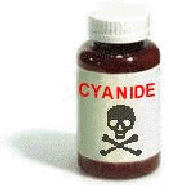 as unprocessed cassava, cherry pits, apricot pits, bitter almonds. Hydrogen cyanide is contained in vehicle exhaust and in tobacco smoke, as does burning plastic. Cyanides are also found in gold processing. Cyanide interrupts the electron transport chain in the inner membrane of the mitochondrion. Cyanide also occupies the place of oxygen in hemoglobin (which transports oxygen). Oxygen is required for the formation of L-dopa. So carbon monoxide may cause Parkinson's disease symptoms by interfering with the availability of oxygen to the brain. However, the precise toxic means by which it causes Parkinson's disease has still not been proven. as unprocessed cassava, cherry pits, apricot pits, bitter almonds. Hydrogen cyanide is contained in vehicle exhaust and in tobacco smoke, as does burning plastic. Cyanides are also found in gold processing. Cyanide interrupts the electron transport chain in the inner membrane of the mitochondrion. Cyanide also occupies the place of oxygen in hemoglobin (which transports oxygen). Oxygen is required for the formation of L-dopa. So carbon monoxide may cause Parkinson's disease symptoms by interfering with the availability of oxygen to the brain. However, the precise toxic means by which it causes Parkinson's disease has still not been proven.COPPER Copper accumulates in Wilson's disease, which is associated with Parkinson's disease. Although copper may cause  symptoms by other means, there do not appear to be published studies in which copper has otherwise caused Parkinson's disease. This may be because copper is not normally formed in to a vapour or dust that can readily be inhaled or consumed. Copper can be found in high quantities in copper mines, copper cooking pots, copper plumbing, very excessive consumption of copper nutritional supplements. Excess copper can cause the formation of a copper-dopamine complex, which leads to the oxidation of dopamine to aminochrome. symptoms by other means, there do not appear to be published studies in which copper has otherwise caused Parkinson's disease. This may be because copper is not normally formed in to a vapour or dust that can readily be inhaled or consumed. Copper can be found in high quantities in copper mines, copper cooking pots, copper plumbing, very excessive consumption of copper nutritional supplements. Excess copper can cause the formation of a copper-dopamine complex, which leads to the oxidation of dopamine to aminochrome. LEAD Prolonged exposure to lead can double the likelihood of developing Parkinson’s Disease. Common means of lead poisoning are lead contaminated soil, and ingestion of lead dust or chips from deteriorating lead-based paints. Lead  has also been found in drinking water, from plumbing and fixtures that are either made of lead or have trace amounts of lead in them. Lead can be found in cosmetics in some countries, and in toys such as many from China. Due to the similarity of their structures, lead can inadvertently replace iron in enzymatic reactions, but it does not properly function as a cofactor. This might cause a reduction in L-dopa because iron is an essential cofactor for L-dopa formation. Lead can also interfere with oxygen transport by reducing hemoglobin biosynthesis. has also been found in drinking water, from plumbing and fixtures that are either made of lead or have trace amounts of lead in them. Lead can be found in cosmetics in some countries, and in toys such as many from China. Due to the similarity of their structures, lead can inadvertently replace iron in enzymatic reactions, but it does not properly function as a cofactor. This might cause a reduction in L-dopa because iron is an essential cofactor for L-dopa formation. Lead can also interfere with oxygen transport by reducing hemoglobin biosynthesis. Trichloroethylene People subjected to chronic industrial exposure of the solvent Trichloroethylene have been found to have Parkinson’s Disease. Trichloroethylene is a solvent, that is used extensively in industry and the military and is a  common environmental contaminant. It has been used to extract vegetable oils, in coffee decaffeination, and in the preparation of flavouring extracts from hops and spices. The precise means of toxicity is unknown. Workers with workstations adjacent to the source of trichloroethylene and who were subjected to chronic inhalation and dermal exposure from handling trichloroethylene-soaked metal parts all had Parkinson's disease. Lesser chronic respiratory exposure to trichloroethylene led to many features of Parkinsonism, including significant motor slowing. Under the trade name Tilene, trichloroethylene was used as an anesthetic and as an inhaled obstetrical analgesic in millions of patients. Tilene has been found to cause shaking and stiffness common environmental contaminant. It has been used to extract vegetable oils, in coffee decaffeination, and in the preparation of flavouring extracts from hops and spices. The precise means of toxicity is unknown. Workers with workstations adjacent to the source of trichloroethylene and who were subjected to chronic inhalation and dermal exposure from handling trichloroethylene-soaked metal parts all had Parkinson's disease. Lesser chronic respiratory exposure to trichloroethylene led to many features of Parkinsonism, including significant motor slowing. Under the trade name Tilene, trichloroethylene was used as an anesthetic and as an inhaled obstetrical analgesic in millions of patients. Tilene has been found to cause shaking and stiffness |
Amazing! From a wheelchair to walking 3 miles per day! This is my story in overcoming a 21 year battle with Parkinsons!

Tuesday, February 22, 2011
Toxic causes of Parkinson's
http://viartis.net/parkinsons.disease/toxic.causes.htm
Thursday, February 3, 2011
It is all just theories....
Early on in my diagnosis, about 1993, I heard that there was a study that had tied Parkinson's disease to Pesticide exposure. This has always lingered in my mind because of my incident with a crop duster directly spraying me.
Over the years, I have learned to be very conservative with my medications because the doctor informed me that they would only last for 20 years. And since I was a very young person with PD, I needed to be convservative with my medications.
THE BEST ADVICE THAT I HAVE EVER RECEIVED!!
Now, I am a medical miracle. During a recent Neurological visit, the doctor told me that I should be on 5 TIMES the amount of medication that I am on. Wow! But, I am still considered an unusual case. Fighting the disease with nutrition rather than living in a nursing home. Walking instead of being in a wheelchair. And yes, I have tried some crazy things. I would like to use this site to share my thoughts, experiences and recommendations with the Parkinsons community.
I have also started speaking locally to Parkinson's support groups. This has been a wonderfully rewarding experience.
RECOMMENDATION OF THE DAY for PARKINSONS PATIENTS: (I know this is a hard one) Force yourself to drink more water! A MINIMUM of 60-100 ounces a day for someone weighing 120 pounds.
Over the years, I have learned to be very conservative with my medications because the doctor informed me that they would only last for 20 years. And since I was a very young person with PD, I needed to be convservative with my medications.
THE BEST ADVICE THAT I HAVE EVER RECEIVED!!
Now, I am a medical miracle. During a recent Neurological visit, the doctor told me that I should be on 5 TIMES the amount of medication that I am on. Wow! But, I am still considered an unusual case. Fighting the disease with nutrition rather than living in a nursing home. Walking instead of being in a wheelchair. And yes, I have tried some crazy things. I would like to use this site to share my thoughts, experiences and recommendations with the Parkinsons community.
I have also started speaking locally to Parkinson's support groups. This has been a wonderfully rewarding experience.
RECOMMENDATION OF THE DAY for PARKINSONS PATIENTS: (I know this is a hard one) Force yourself to drink more water! A MINIMUM of 60-100 ounces a day for someone weighing 120 pounds.
Documented Health Improvement based on Nutrition
Health Observations – Michelle Schmidt
| | Apr. ‘05 (Released from Hospital) | Aug. ‘05 (Special diet, vitamins, mineral bath) | Jan. ‘06 (Continued) | Apr. ‘06 (Returned to regular diet) | July ‘06 (Last order of vitamins) | Aug ‘06 (Vitamins decreased) | Nov. ’06 (4 months without financial support for vitamins) |
| Activity Level | Minimal | Biked 5 miles a week | Gym visits 5 times a week | Gym visits 1-2 times/wk | Gym twice a week | Gym visits once a week | Homebound |
| Driving | None | Independent | Independent | Limited to 20 miles | Limited but occasional longer distances | Minimal in town-(emergency assistance needed) | Not driving much |
| Errands done alone | No | Yes | Yes | Yes | Yes | No | No |
| Hip pain | Yes | No | No | No | No | Yes | Yes |
| Difficulty with stairs | Yes | No | No | Some | Some | Yes | Yes, very difficult |
| Fainting | No | No | No | No | No | Yes (4x) | Emergency Room visits (3x) |
| Stretches Needed | Daily | 1-2 times a week | 1-2 times a week | 1-2 times a week | 1-2 times a week | Daily | Daily |
| Massages Needed | Twice a week | Once a week | Once a week | Once a week | Once a week | Twice a week | Twice per week |
| Monthly PCA Dollars Spent | 800 | 100 | 80 | 80 | 20 | 475 | 395 |
1-10 Scale Rating Symptoms
| | Apr. ‘05 | Aug. ‘05 | Jan. ‘06 | Apr. ‘06 | July ‘06 | Aug. ‘06 | Nov. ‘06 |
| Crawling | 10 | 0 | 2 | 4 | 4 | 10 | 10 |
| Leg pain | 10 | 1 | 4 | 7 | 7 | 10 | 10 |
| Emotional control | 10 | 2 | 4 | 5 | 5 | 10 | 10 |
| Lack of mental clarity | 10 | 0 | 2 | 4 | 4 | 10 | 10 |
| Food reactions | 10 | 3 | 1 | 5 | 5 | 10 | 10 |
| Concentration | 8 | 3 | 2 | 4 | 4 | 8 | 8 |
| Abdominal pain | 10 | 2 | 2 | 4 | 4 | 8 | 10 |
| Headaches | 8 | 2 | 3 | 5 | 5 | 9 | 10 |
| Muscle stiffness | 10 | 2 | 2 | 4 | 4 | 10 | 10 |
Diagnoses and Prescribed Vitamins
| Parkinson's | Multivitamin Vitamin B6 , B12, & Folic Acid Calcium & Magnesium EPA/DHA (Omega-3) Vitamins C, D, & E CoQ10 & NAC |
| Osteoporosis | Vitamin D, Calcium & Magnesium, |
| Sleep Problems | Melatonin |
Lab Tests prove…
+ Need Magnesium, B12, Selenium, Vitamin E, Glutamine, Glutathione, Pantothenate.
Background sheet
Michelle Schmidt
Detailed Diagnoses;
Early On-set Parkinsonism diagnosis (Age 19) 04/90
Severe chemical toxicity causing acidic environment
Notes: Cold Meds are counter-indicated for PD meds (MAOI)’
L-Tyrosine caution
2nd Diagnoses: IBS
Memory problems
Watch for deficiencies in:Vita. B6, B12, C, D, E,
Fatigue due to lack of enzymes & minerals
Fibromyalsia
Gastritis
Anemia – Low iron and need B6 to absorb
Candida – systemic yeast infection
Formerly Limes Disease
Spectracell Lab results: Functional deficiency in B12, Pantothenate, Glutamine, Selenium, Vitamin E, Glutathione, Magnesium
Surgeries: 9/07 L4-L5 Laminectomy & Diskectomy Back Surgery @ St. Cloud Hospital
11/08 L4-L5 Laminectomy & Diskectomy Back Surgery @ Mayo Clinic
Physical Therapy: *Daily Stretches: Hamstrings, Hip Abduction, Hip flexors, Standing hip extensions, toe lifts, and ankle strenygthening
*Needs to maintain core & back strength to due to surgeries
*Difficult ambulating; uses walker or wheelchair at times
*Pilates & Tai Chi recommended
Sensitivities: Sugar, Gluetin, Organic diet due to Pesticide Exposure
Direct Chemical – Pesticide exposure
*Watch for use of household & yard chemicals
*Some Carbohydrate intolerance
Allergies: CT Contrast dye & Benedryll
Recipes
Iron-rich salad:
2 large handfuls arugula or other salad greens
1/2 cup dulse fronds, picked over and torn into bite-size pieces,
or 1/4 cup dulse flakes
Sea salt to taste
2 tablespoons extra-virgin olive oil
2 teaspoons fresh lemon juice
Freshly ground black pepper to taste
1/4 cup roasted walnut halves
Arugula blossoms for garnish (optional)
Fermented Food:
1 large head organic cabbage
1 medium beet
2 minced garlic cloves
1 teaspoon caraway seeds
1 tablespoon sea salt
Remove any coarse or dry outer cabbage leaves. Cut the cabbage lengthwise into quarters. Grate the cabbage, core and all, and beet on ¼-inch holes of a hand grater or in a food processor using the fine grater. Mix the vegetables with the garlic, caraway seeds and salt. Firmly pack into a wide-mouth quart jar, filling it almost to the brim. Set the jar on a plate to collect any potential overflow.
To apply pressure to the top of the vegetable shreds, use a weight that’s small enough to nest inside of the wide-mouth jar. This weight may be a clean rock or a water-filled glass bottle or a zip-lock baggie.
Rest the weight atop the grated cabbage. Brine will form and rise to the surface within 24 hours. (If brine fails to rise and/or remain at the top, dissolve ¼ teaspoon salt in ½ cup water and pour it on top of the cabbage.)
The kraut will be ready in 5 to 7 days, or when it has a pleasant and tangy fermented flavor and the cabbage shreds are translucent rather than opaque. (To heighten the sour flavor, ferment it for 10 days.) Remove the weight. Remove and discard any bubbly foam or discolored kraut from the top of the jar. Wash and tightly cover the jar. The kraut will keep refrigerated for 6 months.
High Nutrient Seaweed
http://www.rwood.com/Recipes/Hiziki_and_Carrots.htm
Kelp tablets—Seaweed supplements work for some people. However, kelp tablets are your priciest option and you don't get to enjoy the flavor. Additionally, it's hard to assess their quality and to know whether or not the kelp was sustainably harvested from clean waters.
Dulse—A purple-red frond, dulse has a slightly tangy, salty flavor and is delicious eaten straight from the package as a snack or added to trail mixes. To include in a salad or sandwich, dip dulse into water and then tear it into pieces. It's reminiscent of jerky, or when pan-fried in oil, of bacon. But, in a chameleon-like way, when dulse is added to a soup, it imparts an enticing seafood flavor. Or purchase dulse flakes or powder and sprinkle onto savory dishes.
Kombu—Here's a seaweed that's as easy as to use as a bay leaf. It heightens a food's natural flavor and significantly increases the nutritional and medicinal properties of savory dishes. Simply add a 2- to 3-inch strip of kombu to every pot of beans, soup or stock you make. Remove the kombu prior to serving.
Nori—Good for more than just sushi, nori is a great finger food for toddlers. Cut into ribbons or torn into small pieces, nori makes an elegant garnish. Nori is higher in protein than beef, fish, poultry or milk and it has more vitamin A than carrots.
Wakame—Here's a classic soup ingredient. Hydrate wakame with a quick soak, then chop (removing the central, hard stem if necessary) it into bite-size pieces and add to soup for both its flavor and texture. With wakame flakes, sprinkle them right from the package into your soup, simmer a minute and they’re ready.
Arame—These elegant strands of glistening black seaweed enhance salads, pilafs and vegetable dishes. Sauté or simmer it like you would carrots and combine it with your favorite vegetables or grains.
Hiziki—The most mineral-rich of all seaweeds; hiziki contains more calcium than milk. Sauté or simmer it with other vegetables. It requires a little more cooking time than other seaweed varieties.
Sautéed Collards and Burdock: Accompanying article: Chronic Pain
The turmeric, garlic, onion, ginger and burdock enhance this recipe's ability to help reduce chronic pain. If burdock, a slender, black-skinned root vegetable, is not available, substitute a carrot. Sautéing boosts flavor and is a foolproof way to cook most vegetables.
2 tablespoons ghee, butter or extra virgin olive oil
2 cloves garlic, minced
2 teaspoons minced ginger or 1/4 teaspoon powdered ginger
1/4 teaspoon turmeric
1 onion, sliced
1 burdock (or carrot), julienne
3 chopped collard greens
Freshly ground pepper to taste
1 tablespoon naturally fermented soy sauce or sea salt to taste
Warm the fat or oil in a skillet over medium heat. Add and sauté the garlic, ginger and turmeric for 1 minute. Then add and sauté the onion until it becomes limp. Add and sauté sfirst the carrot and then the collards for 3 minutes each or until lightly cooked. Season with pepper and soy sauce. Cover and cook for about 5 minutes or until vegetables reach desired tenderness, stirring as necessary. Serve hot.
White Gazpacho with Grapes and Toasted Almonds
2 large English cucumbers (or 3 large regular cucumbers), peeled and roughly chopped 3 slices white bread, crusts removed
1/2 cup warm water
3 cloves garlic
6 scallions, whites only, divided
1/4 cup white wine vinegar or Sherry vinegar, plus more, to taste
1 teaspoon lemon juice, plus more to taste
1/4 cup plus 4 teaspoons slivered almonds, lightly toasted, divided
1/2 teaspoon salt, plus more, to taste
3 tablespoons olive oil
1/2 cup green grapes, halved
Set aside 1 cup of chopped cucumber for a garnish. Soak the bread in water until soft, about 2 minutes. Place soaked bread, the rest of the cucumber, garlic, 3 of the scallions, vinegar, lemon juice, 1/4 cup of the almonds, salt and 3 tablespoons of olive oil in the bowl of a food processor and process until cucumbers are completely blended and liquid and almonds are almost completely invisible, about 1 to 2 minutes. Season with additional salt and vinegar, if desired.
To serve, ladle 1 cup gazpacho into a bowl. Mound 1/4 cup reserved chopped cucumber, 1 tablespoon scallions, 2 tablespoons grapes and 1 teaspoon almonds in the center of the soup.
Golden Miso Soup
Golden Miso Soup
Accompanying article: Miso — A Delicious and Healing Food
Serves 4
Adding coconut milk to an otherwise classic squash and miso soup recipe intensifies its rich, sweet flavor and makes it even creamier. When using a yellow or red colored and tender-skinned squash, like butternut or red kuri, you may leave its skin intact. (Trim and discard, however, any tough or warty pieces.) It will soften, blend right into the soup and yield more flavor and nutrients. If fully pureed, a green-skinned squash detracts from the soup’s beautiful golden color.
1 tablespoon sesame or coconut oil
1 cinnamon stick
1 tablespoon minced ginger
1/2 teaspoon turmeric
3 cups cubed butternut squash
1 large onion, diced
1 (14-ounce) can coconut milk
1/2 teaspoon sea salt
2 tablespoons sweet light miso
Freshly ground black pepper to taste
1/2 cup shredded unsweetened coconut, lightly toasted
Warm the oil in a 4-quart pot over medium heat. Add the cinnamon stick, ginger and turmeric and sauté for 1 minute. Add the squash and onion and sauté for 5 minutes or until the vegetables soften. Add the coconut milk, 2½ cups water and salt and bring to a boil. Reduce the heat to medium-low, cover, and simmer for 15 minutes, or until the squash is tender. Remove the cinnamon stick.
Place the miso and 1/4 cup of soup broth in a small bowl and puree with a fork. Add the puree to the soup and simmer for 1 minute, taking care to not let the soup boil. Season with pepper. Adjust seasonings and remove from the heat.
Lightly puree the soup using a potato masher. Or fully puree the soup in a blender or food processor, taking care to not burn yourself. Divide the soup between four bowls and garnish each bowl with 1 tablespoon of shredded coconut, place the remainder of the coconut on the table to pass around.
Background on Parkinsons patient
10/2003 EXISTING CONDITIONS
| MAJOR Parkinson’s Osteoporosis General Toxicity / Detoxification required (85%) Adrenal Fatigue – Low adrenal function (96%) Insomnia Hidden Food Allergies n (99%) Liver Detoxification /support required Chronic fatigue / Fibromyalgia Candida (100%) | MINOR Depression, Stress, Anxiety Chronic inflammation Risk for Melanoma & Multiple Sclerosis Autoimmune issues Dehydration Low Back Pain – Siatica Flat footed Neck pain Gingivitis Leg cramps at night |
SUGGESTIONS –MEDICAL TESTING NEEDED:
| Important | Soon | May consider |
| Food Allergy Testing - Great Smokies Diagnostic Laboratories Dr. Sult | Hypothyroidism | Possibility of Gluten sensitivity/celiac Disease |
| Bone density Scan Dr. Baumgartner | Suspect Bacterial Dysbiosis Dr. Sult | Check ears at doctor Hydrochloric acid deficiency |
| Lymes Disease (83%) Dr. Baumgartner | | Hypercoagulation (thickened blood) |
| Hypoglycemia (muscle cramping) Dr. Sult | Monitor cortisol levels | Serum Ferritin to gauge iron levels |
| Menopausal Status– test hormones Dr. Lyle Lundblat 6600 France Ave. S. Urologist/Endocrinologist | BoTox Injections | Treat candida |
| Prolotherapy for low back – Dr. Baumgartner | | EDS Test |
SUGGETIONS – NUTRITION & SUPPLEMENTS
| Important | Eventually add | Not sure |
| *Magnesium (daily), Water DHEA,Iron, Alpha Lipoic Digetive Enzymes Sublingual B12, Vitamin D Vitamin E, B Complex Fish Oil, *Omega 6 B6 for PD Glutathione – Immunocal | B12 Injections CoQ10 Chlorella/Algae MSM Take adrenal support *Liver – milk thistle daily *Homeopathy –Cell Salt, Kali Phos for brain fog or unresolved grief | *Boron, Zinc, Phosphorus Tryptophan or Melatonin (for insomnia) Bentonite Clay for detoxing Coffee enemas for liver detoxification |
| *milk thistle daily (liver) *Chew Xylitol, Oregano Oils & use Neem bark toothpaste to reduce periodontal disease | | |
DIETARY SUGGESTIONS:
Avoid dairy – 10 days
Avoid sugar
Water – prevent night cramping
*Homeopathy –Cell Salt, Kali Phos for brain fog or unresolved grief
Increase magnesium by eating brown rice (muscle cramping)
Eat garlic …Take Iron from meat sources – serum ferritin to gauge levels
SUGGESTIONS - OTHER
Get regular exercise Yoga - BK “Twenty minute yoga workouts”
Electrical sensitivity – can cause seizures
Five Rites exercises
| Fiber | Red kidney beans(16) & Raspberries (8) | |
| Calcium | Ricotta cheese (11/2 c. daily) | |
| Vita E | Almonds (2 oz) | |
| Magnesium | White Beans (134g) Navy (96) Pinto (86) Garbanzo (69) | |
| Vita A | Raw carrot, pupkin, peppers, spinach | |
| | | |
| Vita C | Red Pepper | |
| Iron | meat, green vegetables, blackstrap molasses, seaweed, poultry, fish, eggs, prunes and legumes | |
| Iron Robbers | Processed food, soft drinks,ice cream, caffeine | |
| Living Cultures Food | Kim Chee, Kefir, yogurt, miso | |
| High nutrient seaweed | | |
| Reduce inflammation | Both cherries and pineapple reduce inflammation, Chlorophyll, collards | |
| Increases flexibility in ligaments | The Spice of turmeric | |
| Herbs that reduce inflammation & heal muscles | onion family, flax, burdock, ginger, yam, winter squash, sweet rice, millet and chamomile. | |
Subscribe to:
Posts (Atom)
